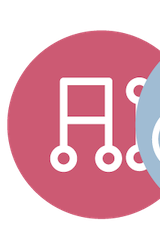Simplification in IT is an illusion; increasing complexity outpaces every effort to simplify. This episode of the Tech Field Day podcast, recorded on-site at Cloud Field Day 24, features Camberley Bates, Nathan Nielsen, Guy Currier, and Alastair Cooke. Cloud services and centralized management platforms offer simplified interfaces but also introduce a multitude of choices and underlying complexities. History matters; advancements from mainframes to PCs demonstrate continuously shifting goalposts, while the more recent integration of cloud and AI contributes to increased complexity. It may be that AI brings simply advanced simplicity, yet it may also bring the unintended consequence of people becoming “ignorant” of how IT works. CIOs and CTOs need to think strategically to manage increasingly complex environments, striking a balance between patchwork fixes and long-term strategic approaches.
Well Managed Kubernetes Means Infrastructure Finally Doesn’t Matter
In a world of well-managed Kubernetes, we hoped that infrastructure finally wouldn’t matter. This episode of the Tech Field Day podcast features John Willis and Guy Currier wishing that infrastructure didn’t matter, with Alastair Cooke. Every new infrastructure revolution claims to make infrastructure invisible, from virtualization through HCI and cloud to containers and Kubernetes. The reality has always been that these revolutions shift the definition of infrastructure and bring some new aspect to be managed. Developers building features and applications want to focus on satisfying some business need, not considering storage devices and network configurations. Virtualization and Kubernetes both made delivering infrastructure easier, but neither eliminated infrastructure architecture and management. The dream of self-deploying and self-organizing infrastructure is as distant as it ever was. Agentic AI is the latest new hope to eliminate infrastructure challenges, yet it brings its own complex infrastructure requirements. Will we ever stop caring about IT infrastructure?
Guy Currier Gives A Rapid Reaction to the Cloud Field Day 24 Pure Storage Presentation
Guy Currier and Jon Hildebrand discussed the Pure Storage presentation at Cloud Field Day 24, reflecting on its implications and innovations in cloud data management. He emphasized the significance of Pure Storage’s strategies in enhancing cloud efficiency and data optimization. For more videos, watch Jon Hildebrand’s YouTube channel!
The Role of Data Infrastructure in Enterprise AI with Ingo Fuchs of NetApp
The podcast episode explores the critical role of data infrastructure in supporting enterprise AI and agentic AI applications. It emphasizes the need for storage infrastructure teams to take a more active role in enabling performance, efficiency, and governance for AI workloads. The conversation highlights NetApp’s capabilities, such as AI Data Engine and native infrastructure integrations, in enabling real-time data pipeline management and ensuring consistent and secure data delivery.
Exploring the Future of Enterprise AI Deployment and Innovation at AI Field Day 7
Join Tech Field Day, Techstrong, Futurum, and our panel of independent experts for AI Field Day 7, live October 29th and 30th, 2025. Watch live on Techstrong TV, LinkedIn, and the Tech Field Day website, where you can also view the full schedule.
The Evolution of Cloud at Cloud Field Day 24
Cloud Field Day 24 is back in San Francisco on October 22nd and 23rd, bringing the brightest minds in enterprise cloud together for two days of innovation, insight, and live demos.
Your Edge Projects will Fail Without Fleet Lifecycle Management with ZEDEDA
Projects to deliver applications to edge locations will fail without comprehensive fleet lifecycle management. This episode of the Tech Field Day podcast features Sachin Vasudeva from Zededa discussing the importance of long-term edge management with Guy Currier and Alastair Cooke. There are unique challenges of managing edge deployments compared to cloud or on-premises environments. Focusing on business logic and application outputs while leveraging infrastructure providers to handle the complexities of packaging, deploying, and monitoring AI models enables diverse edge environments. Edge locations might have different hardware deployed, intermittent connectivity, requiring a balance between standardization and flexibility in managing edge devices and applications. Teams with rapid responsiveness and adaptation will better enable their business to respond to changing conditions, especially with the rapid pace of AI innovation.
Tech Field Day Experience at NetApp Insight 2025 Keynote Live Blog
Learn more about NetApp Insight 2025 during the Keynote in our delegate live blog!
Agentic AI Spells the End of Dial Twiddlers
If you haven’t already, start working with Generative AI now and make sure to control your ongoing costs. This episode of the Tech Field Day podcast features Russ Fellows, Mitch Lewis, and Brian Martin, all from Signal65, and is hosted by Alastair Cooke. Generative AI is delivering value to businesses of all sizes, but significant evolution in models and technologies remains before maturity is achieved. Experimentation is essential to understand the value of new technologies, starting with cloud resources or small-scale on-premises servers. Business value is derived from the inference stage, where AI tools generate actionable information for users. Generative AI is like a knowledgeable and well-intentioned intern; someone more senior must ensure AI is given good instructions and check their work. In production, grounding and guard rails are vital to keep your AI an asset, not a liability.
Techstrong Gang – May 20, 2025
In the May 20 episode of Techstrong Gang, Stephen Foskett discusses his visit to the Qlik Connect event in Orlando. Foskett and Guy Currer dive into the growing role of agentic AI in analytics, shedding light on how AI is evolving from simple LLMs to multi-agent systems that assist users in querying and making sense of business data. Qlik, long dedicated to predictive analytics, continues to focus on practical, nuts-and-bolts innovations rather than flashy generative AI buzz. Watch Techstrong Gang for more tech insights every weekday!
Qlik Connect 2025 Keynote Live Blog – Day Two
Tech Field Day heads to Qlik Connect May 13 through May 15, providing videos, interviews, behind the scenes footage, and of course the Tech Field Day style presentations you’ve come to expect. This Live Blog coverage of the Day Two Keynote tells what our Delegate community is learning from the event. Learn more about the […]
Qlik Connect 2025 Keynote Live Blog – Day One
Tech Field Day heads to Qlik Connect May 13 through May 15, providing videos, interviews, behind the scenes footage, and of course the Tech Field Day style presentations you’ve come to expect. This Live Blog coverage of the Day One Keynote tells what our Delegate community is learning from the event.
Techstrong Gang – April 29, 2025
The April 29 episode of Techstrong Gang discussed AI security, focusing on prompt injection attacks and vulnerabilities in foundational language models. In the central segment, Stephen Foskett provides an insightful overview of the discussions and innovative solutions presented at AI Infrastructure Field Day 2. He covers key presentations that highlight advancements in AI hardware and software platforms, emphasizing the impact on enterprise IT infrastructure. Catch Techstrong Gang every weekday, and watch for Stephen on most Tuesday episodes!
AI Needs to Be Boring
Mature technologies deliver business value by integration into boring production applications, so AI needs to be boring. This Tech Field Day Podcast episode features Max Mortillaro, Guy Currier, Jay Cuthrell, and Alastair Cooke. AI has frequently been in the public news, many organizations are busy building AI infrastructure and pipelines, and vendors have tagged their applications with AI to ride the hype. Yet, business value is usually delivered in applications that serve customers rather than generating headlines. The first steps towards AI being a functional but boring part of production applications have emerged, with interoperability mechanisms like MCP and A2A are vital steps towards pervasive AI. Options for Small Language Models (SLM) are opening up more cost-effective use of generative AI, while predictive AI continues to be the standard boring production AI. Data and output safety are other areas for development; avoiding GenAI hallucinations, model poisoning, and data leakage is vital for AI to become boring. Eventually, Generative AI will be as invisible and valuable in mainstream business applications, leading to a return on all the current investments.
HPE and the Value of On-Prem: ProLiant Gen12 Servers
Guy Currier’s latest analysis focuses on Hewlett Packard Enterprise’s (HPE) commitment to on-prem solutions, specifically spotlighting the ProLiant Gen12 servers. He discusses the servers’ new features and how these enhancements align with current IT infrastructure demands. For more coverage of our recent Tech Field Day Exclusive event with HPE, watch the Tech Field Day website and social media channels!
Companies Looking to Get Started in AI May Be Overthinking It
In her latest article for Techstrong AI, Sulagna Saha explores the common misconception that initiating AI projects in businesses requires highly complex preparation and strategy. Based on a talk by Guy Currier of The Futurum Group, Saha discusses how enterprises can begin their AI journey more straightforwardly, emphasizing practical steps rather than over-planning. For further insights on Edge Field Day 3, check out the Tech Field Day website.
Techstrong Gang – December 18, 2024
Stephen Foskett provides an in-depth analysis of the presentations and technological showcases at Tech Field Day during his December 18 appearance on Techstrong Gang. He focuses on the innovative uses of artificial intelligence in enterprise technologies, which were highlighted during the event. For additional insights and coverage on Tech Field Day, watch Stephen Foskett’s regular appearances on Techstrong Gang.
SOUTHWORKS: Reducing Slippage and Increase Scope Control
Guy Currier recently provided an insightful analysis on SOUTHWORKS at AppDev Field Day 2, focusing on their efficient strategies to minimize project slippage and enhance scope control. His coverage highlights the innovative approaches deployed by SOUTHWORKS to manage and deliver complex app development projects effectively. For further details on this topic, explore Guy Currier’s additional reports from AppDev Field Day 2 at The Futurum Group.


















